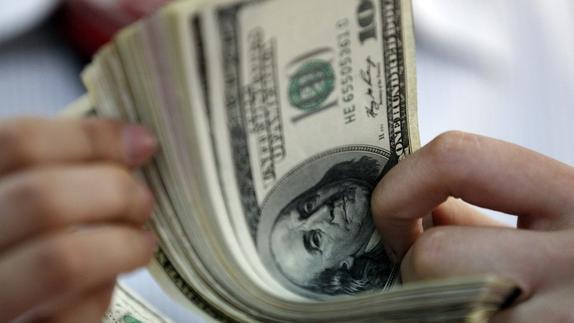Actual use of foreign capital in first two months accelerates 37.9% y-o-y
 A teller counts dollar notes at a bank in Huaibei, Anhui province. (PHOTO / SIPA)
A teller counts dollar notes at a bank in Huaibei, Anhui province. (PHOTO / SIPA)
Amid its pursuit of high-quality development and economic structural upgrades, China has become increasingly attractive to foreign investors due to long-term development prospects and a continuously improving business environment, analysts said on Monday.
Their comments came as the Ministry of Commerce said actual use of foreign capital surged 37.9 percent year-on-year to hit 243.7 billion yuan ($38.33 billion) during the first two months of the year.
That amounts to $37.86 billion in US dollar terms, up 45.2 percent year-on-year, the MOC said.
"Amid the impact of the COVID-19 pandemic and other global uncertainties, China has achieved a stable and rising economic performance, while its business climate keeps improving, thanks to various policy measures the Chinese authorities have adopted to create a better growth environment for enterprises," said Bai Ming, deputy director of international market research at the Chinese Academy of International Trade and Economic Cooperation.
"That makes China a perfect destination for foreign investments that seek not only profitability, but also safety," Bai said, adding that the recent local COVID-19 cases will not threaten China's stable economic growth and growing attractiveness to foreign investors.
Zhou Mi, a senior researcher at the CAITEC, also said China's better-than-expected performance in attracting foreign direct investment over the period reflects foreign investors' confidence in the nation's development prospects, and the growing significance of the Chinese market for them.
Analysts stressed the fast growth rates of FDI in services and high-tech industries are also a demonstration of the achievements the Chinese economy has been making in transitioning toward a growth pathway that focuses more on innovation and quality.
The MOC said actual use of foreign investment in the services sector during the January-February period totaled 175.7 billion yuan, up 24 percent year-on-year.
Investment in high-tech industries grew 73.8 percent year-on-year. In the total, investments in high-tech manufacturing and high-tech services grew 69.2 percent and 74.9 percent, respectively.
The fast growth of foreign investment in the services sector and high-tech industries echoes China's rapid development in related areas, Zhou said.
"The phenomenon has come amid the worldwide trend of increased online economic activity such as pandemic-related transactions and technological progress.
"More importantly, with growing emphasis on high technology-powered development, China has been creating more favorable conditions to encourage foreign investment in high-tech sectors."
According to Bai, the country's ongoing upgrades in manufacturing have been presenting fast-growing opportunities for foreign investors in high-tech areas, resulting in an obvious improvement in the nation's FDI structure and quality.
He also said China's continuous efforts to attract foreign investment, including pruning of negative lists for foreign investment, implementation of the new Foreign Investment Law, trials in pilot free trade zones and Hainan Free Trade Port, have all created a better business climate for foreign investment.
Zhou also said the increasing amount of FDI from economies participating in the Belt and Road Initiative and the Association of Southeast Asian Nations has mirrored closer trade and economic cooperation between China and those economies.
The economic rise of the central regions, thanks to the accelerated establishment of China's unified domestic market, also makes them more attractive to foreign investors, he added.
FDI from economies participating in the Belt and Road and ASEAN member states grew 27.8 percent and 25.5 percent, respectively, year-on-year, while FDI in central China grew 74.9 percent year-on-year. Growth for eastern and western regions stood at 36.6 percent and 13 percent, respectively, according to the MOC.


